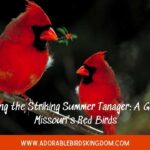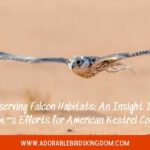I’ve spent countless nights under the vast South Dakota sky, mesmerized by the enigmatic hoots of owls echoing through the darkness. These nocturnal creatures are a fascinating part of our state’s wildlife, and I’m thrilled to shed some light on them.
South Dakota is home to several owl species, each with its unique traits and behaviors. From the Great Horned Owl, our state bird, to the elusive Burrowing Owl, there’s a lot to explore. So, let’s dive in and get to know our feathered neighbors better.
But don’t be fooled by their cute, fluffy exterior. Owls are skilled hunters, equipped with razor-sharp talons and a keen sense of hearing. They play a crucial role in maintaining the balance of our ecosystem. Stay tuned as we delve deeper into the world of South Dakota’s owls.
The Great Horned Owl – South Dakota’s State Bird
In the rich tapestry that is South Dakota wildlife, one particular species stands out: The Great Horned Owl. It’s not just another addition to the bird kingdom but a symbol of the state’s rich fauna, officially designated as South Dakota’s state bird. Native to the Americas, it earned its name from the tufted feathers that resemble horns on top of its head.
The Great Horned Owl is a powerful and feared raptor known for its deep hooting calls that echo across the vast plains and forests. Robust and versatile, these birds are comfortable survivors in various environments – from dense woodlands to open prairies and rugged mountains.
If you’re wondering about the physical characteristics of these birds, here’s a breakdown:
| Physical Characteristics | Description |
|---|---|
| Size | Typically between 18 to 25 inches in length |
| Wingspan | Ranges from 40 to 60.5 inches |
| Weight | Usually weighs around 3 to 5.5 pounds |
| Eye Color | Has distinct yellow-orange eyes |
The owl’s striking features aren’t just for show. They play an integral part in the owl’s hunting prowess. Their large, broad wings allow them to swoop down silently on their prey while the sharp talons are deadly weapons. The yellow-orange eyes aren’t just captivating; they afford the bird superior night vision, a must for a nocturnal hunter.
The Elusive Burrowing Owl
In the vast landscape of South Dakota, another remarkable owl species commands attention ‒ the Burrowing Owl. These owls stand out, not for towering stature or fearsome talons, but for their unusual nesting habits. Unlike their brethren, these birds are ground-dwellers, making their homes in abandoned prairie dog burrows or similar subterranean hideaways.
Burrowing Owls are smaller, typically measuring about 10 inches in height. These compact raptors sport distinct physical features. Their color ranges from sandy brown to gray, providing natural camouflage. Bright yellow eyes stand out against their earth-toned plumage, sparking with an intelligent gaze.
Highly adaptive, these owls are comfortable in a variety of terrains, including grasslands, agricultural areas, or even airfields and golf courses. Burrowing Owls have one key factor in choosing their habitat ‒ it must contain open areas for hunting.
When it comes to diet, Burrowing Owls are opportunistic eaters:
- Invertebrates like insects and spiders make up the bulk of their diet
- Small mammals like moles and mice are occasional treats
- They’re not averse to snacking on birds and reptiles
Human activity often threatens Burrowing Owl populations. Conversion of their native habitats into farmland or residential areas can drastically affect their lives. South Dakota, however, offers sanctuaries for these unique birds. The state’s multiple grassland reserves play a crucial role in preserving this important species.
Their distinctive traits and behaviors add another layer to the richness of South Dakota’s avian life. Their burrow-lifestyle, often lit with the twinkling of bright yellow eyes peering out from the earth, adds a touch of enchantment to the plains’ vast landscapes. These fascinating features, as well as their role in the ecological balance, make Burrowing Owls an integral part of South Dakota’s wildlife tapestry. As we delve further into the life of these remarkable creatures, we’ll discover more about their interesting way of life and their place in South Dakota’s vibrant ecosystem.
Owls’ Hunting Skills and Adaptations
In South Dakota, owls have honed their hunting skills, establishing themselves as formidable predators. The mastery of hunting by these birds is due largely to their unique physical attributes and adaptations.
Owls have extraordinary vision. Their eyes are very large in comparison to their head size, offering them a wide field of view. They’re also capable of seeing in low light conditions making them efficient hunters at night. Owls are also known for their exceptional hearing—with their large, complex ears, they can accurately pinpoint the location of their prey. Some species have asymmetrical ear placements that improve their ability to detect sounds in multiple dimensions—an unparalleled advantage for any predator.
The stealthy approach that owls deploy when hunting is another vital aspect of their success. Thanks to the unique structure of their feathers, they can fly soundlessly. The leading edges of their flight feathers are serrated, a feature that breaks up the flow of air blown over the wing and muffles the sound of their flight. This ensures their prey remains unaware until it’s too late.
A broad diet also testifies to their adaptability and efficient hunting. They feed on a range of creatures from invertebrates to small animals, including but not limited to rodents, birds, and reptiles. The Burrowing Owl in particular employs smart tactics to secure its food. Leveraging their nests’ underground positioning, they’re able to ambush their prey—giving them an edge over their counterparts.
The owls’ special skills and adaptations are integral to their survival but they’re also key to maintaining balance in South Dakota’s ecosystems. These top predators help control the population of rodents and other small mammals, contributing to the harmony of nature in the state.
As we explore further, we’ll delve into the intricate relationships between owls and humans in South Dakota over centuries, showcasing how impact from one species translates to ripple effects across the ecosystem at large.
Role of Owls in South Dakota’s Ecosystem
As we venture further into understanding our feathery friends’ contributions, it’s clear that owls play a decisive role in South Dakota’s ecosystem. They have a unique position as predator and, in some indirect cases, as prey. But perhaps the most apparent evidence of their ecosystem significance comes from their impact on rodent populations.
You see, owls perform an essential duty as natural rodent controllers. Rodents are known to reproduce quickly, and without natural predators like owls, their populations could explode. This overpopulation could lead to imbalances in the food chain and potential damage to crops, making owls’ role in the ecosystem quite crucial.
In South Dakota, a diverse range of owl species exist, each one with a distinct diet:
| Owl Species | Commonly Eaten Rodents |
|---|---|
| Great Horned Owl | Rabbits, squirrels |
| Snowy Owl | Voles, lemmings |
| Burrowing Owl | Grasshoppers, beetles, small rodents |
Additionally, their distinct behaviors affect other parts of the ecosystem. For instance, owls indirectly contribute to nutrient cycling by leaving their droppings, or pellets, around their nesting and hunting grounds. These pellets nourish the soil with nutrients essential for plant growth.
Yet, their influence doesn’t stop at ecological balance. Owls and humans have quite complex relationships, particularly in South Dakota. Now, we must delve into how our conduct impacts owls and, in turn, the ecosystem they help maintain…
Conclusion
It’s clear that owls play a vital role in South Dakota’s ecosystem. They’re not just fascinating creatures to observe but also key players in maintaining ecological balance. From rodent control to nutrient cycling, their contributions are significant. The interaction between humans and owls in this region further underscores our shared responsibility in preserving this delicate balance. So, let’s continue to appreciate and protect these nocturnal guardians of our ecosystem. Their survival and prosperity are integral to the health and vitality of South Dakota’s natural world.



